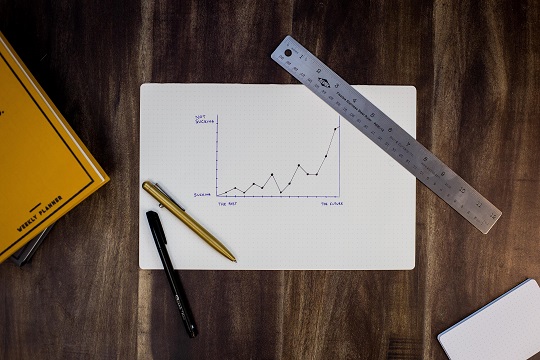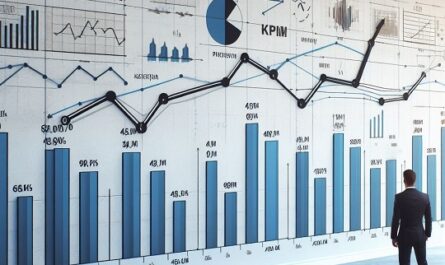In the supply chain world, inaccurate sales forecasts are a big headache. Even with fancy tech and data analysis, forecasts still aren’t trustworthy. This messes up inventory, production, and chances to make money. Why are forecasts always off, and what can managers do?
Before we go further into this topic, don’t forget to follow my LinkedIn account. You’ll get more helpful insights on supply chain management there.
Table of Contents
The Fallacy of Accuracy
Sales forecasts are often wrong because people’s buying habits are hard to predict. Many things like the economy, what’s popular, competition, and even the weather affect what people buy.
People themselves can be unpredictable too.
Even with fancy technology and data, it’s tough for supply chain managers to make accurate forecasts.
Because sales forecasts are so uncertain, supply chain managers need to be flexible. They should use up-to-date information, be ready to change inventory plans quickly, and work closely with sales, marketing, and production teams.
By keeping an eye on the market and adjusting plans as needed, managers can avoid having too much or too little inventory, make production more efficient, and grab more sales opportunities. This helps the whole supply chain work better.
Factors Contributing to Inaccuracy
Incomplete Data
Sales forecasts usually look at past sales to predict future trends and help businesses make smart decisions. But sometimes, unexpected things happen in the market that can throw off these predictions.
For example, a sudden craze on social media or a new product from a competitor can change how much people buy, and past data might not catch these changes.
To deal with this, businesses can use real-time data and market info along with their usual forecasting methods.
This helps them stay on top of what’s happening right now in the market and understand how people are behaving.
By combining past data with real-time info, businesses can make better predictions, be ready for surprises, and make smarter decisions to stay competitive in a fast-changing market.
Market Volatility
Economic ups and downs and unexpected events like pandemics or natural disasters can mess up how much people buy. When the economy isn’t stable, people get nervous and spend less, especially on things they don’t really need.
Likewise, disasters can mess up the supply chain, causing shortages or delays in getting stuff to stores, which also affects what people buy.

To deal with these surprises, businesses need to be quick on their feet. They should have flexible plans for getting products to customers even when things get messy. They might need to change how they market or price things to match what people want to buy.
Keeping an eye on what customers are doing and staying on top of market trends helps businesses adjust and keep up with changes in what people want.
By staying alert and being ready to change, businesses can handle surprises better and keep up with what customers need even when things get rough.
Changing Consumer Preferences
Consumer preferences change fast, making it hard for businesses to keep up. Lots of things like culture, technology, and trends drive these changes.
For example, as tech gets better, people might want more eco-friendly stuff or digital services instead of old-school options. Social trends and online influencers also play a big role, making trends spread even faster.
To handle these changes, businesses need to always be checking what’s hot with customers. They can use data tools to study what people are doing, keep an eye on social media for new trends, and ask customers directly what they like.
Being ready to change and coming up with new ideas fast helps businesses stay ahead. By staying on top of what customers want, businesses can adjust their products and services to stay competitive in the market.
You might also like:
- 10 Ways Supply Chain Management Can Contribute to Business Profits
- The Top 10 Reasons Why Production Machines Often Encounter Problems Right Up to the Stop Line
External Factors
Consumer preferences change fast because of lots of things like culture, trends, and what people like. This makes it hard for businesses to predict what customers will want.
For example, if there’s suddenly a big trend for healthy living, people might start looking for organic or plant-based products. Trends in fashion or technology can also change what people like, and social media makes trends spread even faster.

To keep up, businesses need to always be watching what’s popular with customers. They need to gather info about what people want and change their products to stay competitive.
But besides what customers like, things outside of a company’s control can also mess up sales predictions.
Stuff like new laws or problems in other countries can affect how much stuff a company can sell. To deal with this, businesses need to plan for different scenarios and think about what might go wrong so they can be ready for anything.
By being aware of what’s happening and planning ahead, businesses can make better predictions and handle surprises better.
Inaccurate Assumptions
Sales forecasts are like predictions about how much a business will sell, but they’re based on some guesses about the market, customers, and how the business works.
However, these guesses might not always match what’s really happening in the business world.
For example, forecasts might assume that the economy will stay steady, people will keep liking the same things, and competitors won’t change much.
But in reality, the economy can go up and down, people’s tastes can change quickly, and new competitors can show up out of nowhere.
Also, forecasts usually look at past data to figure out what might happen in the future.
But this old data might not catch new trends or big changes, like what happened with the COVID-19 pandemic. The pandemic shook things up in a way that old data couldn’t predict.
So, while forecasts can help businesses plan, they’re not perfect.
Businesses need to remember that their guesses might not always match what’s going on and be ready to change their forecasting methods to keep up with what’s happening in real-time.
Strategies for Supply Chain Managers
Even though it’s hard to get sales forecasts exactly right, supply chain managers have a few tricks to deal with not-so-perfect predictions.
Collaborate with Sales and Marketing Teams
When sales and marketing teams work closely together, they can learn a lot about what customers want and how to sell to them better.
Sales teams talk to customers every day, so they know what customers like and what they don’t.

By sharing this info with marketing teams, they can help make marketing strategies and messages more effective.
On the other hand, marketing teams know a lot about what’s going on in the market and what customers are into.
By sharing this info with sales teams, they can help them understand the bigger picture and sell to customers in a way that works better.
So, when sales and marketing teams team up, they can make sales go up by understanding customers better and selling smarter.
Implement Demand Sensing Technologies
Using fancy analytics and machine learning can help businesses predict what customers will want in real-time.
By looking at lots of data from things like sales, social media, weather, and the economy, these tools can figure out what people are likely to buy.
Machine learning is especially good at finding tricky patterns in the data, which helps businesses predict changes in demand more accurately.
This real-time prediction power helps businesses adjust quickly to what’s happening in the market. They can manage their inventory better and use their resources smarter to keep up with what customers want.
Also, these tools let businesses customize their predictions based on different types of customers.
By dividing customers into groups based on things like where they live or how they behave, businesses can tweak their marketing and products to fit each group better.
This not only makes customers happier but also makes predictions more accurate since it considers what different kinds of customers like.
Overall, using advanced analytics and machine learning for real-time demand prediction helps businesses stay on top in today’s fast-changing market.
You might also like:
- 10 Steps to Determine Realistic Profit Targets in Supply Chain Management
- 10 Strategies to Succeed in Supply Chain without Formal Education
Diversify Data Sources
To make better predictions about what customers will buy, businesses need to look at lots of different kinds of data.
First, they can use point-of-sale data, which shows what’s actually selling in stores. This helps them see how well products are doing, spot trends, and understand what customers like in real-time.

Next, social media analytics give them info about what people are saying online.
By looking at conversations, mentions, and how much people engage with posts, businesses can learn about what customers think of their brand and what’s popular right now.
Finally, external market reports from trusted sources give them even more info about what’s going on in their industry.
By putting all this data together and using fancy analytics and machine learning, businesses can get a better overall picture of what’s happening in the market. This helps them make smarter predictions and decisions about what to sell.
Use Probabilistic Forecasting
Instead of just making one guess about the future, businesses can use a smarter way called probabilistic forecasting.
Instead of giving one definite prediction, this method gives a range of possible outcomes and how likely each one is.
By looking at different scenarios and their chances, businesses can understand better what might happen and be ready for different possibilities.
This is helpful when the future is uncertain and changing a lot.
Traditional methods might not handle all the complexity, but probabilistic forecasting can. It uses techniques like Monte Carlo simulations or Bayesian inference to consider lots of different factors and make more flexible predictions.
This way, decision-makers can see the risks and opportunities more clearly and make smarter choices based on what’s likely to happen.
So, by using probabilistic forecasting, businesses can be more prepared for whatever the future brings and make better decisions.
Regularly Review and Update Forecasts
Keeping an eye on what’s happening in the market and updating forecasts regularly is super important to make sure they stay accurate.
In fast-changing business environments, things like what customers like, the economy, or problems in the supply chain can change quickly.
By checking key info like sales numbers, market trends, and what competitors are up to, businesses can see what’s happening and adjust their forecasts accordingly.

It’s also important to keep an eye on stuff outside of the business, like new laws or big events, that might affect sales.
By staying informed about what’s going on, businesses can predict how it might affect their sales and adjust their forecasts ahead of time.
On top of that, businesses should have a way to learn from their past forecasts.
By comparing what they thought would happen to what actually happened, they can figure out where they went wrong and make their forecasts better next time.
This way, they’re always getting better at predicting what’s going to happen and making smarter decisions.
Implement Inventory Optimization Tools
Using special tools to manage inventory can make a big difference for businesses. These tools use smart algorithms and data analysis to figure out how much stuff a company should have in stock based on how much customers want to buy.
By looking at past sales, what’s happening in the market now, and other important info, these tools can change inventory levels quickly to make sure the company has just enough stock to meet demand without wasting money on extra stuff.
These tools also help businesses use a method called just-in-time inventory management, which means they only order new stock when they really need it.
This helps them avoid having too much stuff sitting around, which saves money and keeps cash flowing.
By using inventory tools, businesses can also find ways to make their supply chain work better. They can figure out where things are inefficient, order the right amount of stuff, and even negotiate better deals with suppliers.
Overall, these tools help businesses be more flexible, save money, and keep customers happy by having the right products available when they need them.
You might also like:
- The Domino Effect: Unraveling 10 Consequences of a Weak Supply Chain Team
- 10 Essential Considerations Before Building a New Production Facility
Develop Agile Supply Chains
Businesses need to be able to adapt quickly to changes in demand and avoid problems when their predictions are wrong.
One way to do this is by using flexible manufacturing and distribution methods. This means they can quickly change production and delivery plans based on what customers need right now.

They can use technology like predictive analytics, sensors, and automation to keep an eye on what’s happening and make changes fast.
It’s also important for businesses to work closely with their partners in the supply chain, like suppliers and shipping companies.
By sharing info and working together, they can respond better when things change.
They can also plan for problems by having backup plans like using more than one supplier or keeping extra stock.
By being flexible and working together with partners, businesses can keep up with what customers want, be ready for changes, and stay competitive in today’s fast-paced business world.
Utilize Scenario Planning
Businesses can be ready for different situations by planning ahead and thinking about what might happen in the future. They can create different scenarios, like what might happen if the economy goes up or down, or if customers start buying more or less.
By looking at these different scenarios, businesses can figure out what they need to do to handle each one, like adjusting how much they make or changing their contracts with suppliers.
Having plans for different scenarios helps businesses be flexible and ready for whatever comes their way. These plans should outline exactly what to do if one of the scenarios happens, like changing production or getting more supplies.
By having these plans ready, businesses can react quickly when things change and keep things running smoothly. Regularly reviewing these plans helps businesses stay on top of things and be ready for whatever the future holds.
Invest in Forecast Accuracy Metrics
Regularly checking how accurate forecasts are is really important for businesses to see where they can do better and make changes to their forecasting methods.
They can do this by comparing what they predicted would happen with what actually happened.
They use metrics like mean absolute percentage error (MAPE), mean absolute error (MAE), or root mean square error (RMSE) to see how close their predictions were to reality.
By keeping an eye on these metrics, businesses can spot patterns in where their predictions are off and figure out why.

For example, they might find that they’re not so good at predicting sales for certain products or areas.
This tells them they need to use better methods or get more data to make their predictions more accurate.
Also, by regularly checking these metrics, businesses can see if the changes they make to their forecasting methods actually work over time.
They can try different things, like using different methods or adding more data, and see if it makes their predictions better.
Setting goals for these metrics helps businesses stay focused on improving and making their forecasting methods more accurate.
Ultimately, by keeping track of how accurate their forecasts are, businesses can make better decisions, run more efficiently, and make more money.
Cultivate a Culture of Continuous Improvement
Creating a culture where everyone is always learning and ready to try new things is super important for making forecasting better.
Businesses can do this by making sure employees have access to training and resources about forecasting techniques and tools. This helps them get better at making predictions and using data.
It’s also important to encourage employees to come up with new ideas and not be afraid to try them out. By being open to trying new things and thinking differently, employees can find better ways to do forecasting.
Getting feedback from employees and listening to their ideas helps make forecasting even better. By working together and sharing what they’ve learned, teams can improve how they make predictions and learn from past mistakes.
Overall, by creating a culture where everyone is always learning and trying new things, businesses can make their forecasting process better and be ready for whatever comes their way.
Conclusion
Sales forecasts won’t always be perfect, but supply chain managers can do a lot to lessen the impact of mistakes.
By using smart analytics, working together, and being flexible with their supply chain, businesses can handle market uncertainties better and stay ahead in today’s fast-changing business world.
I hope you find it helpful!
Please share this article with your colleagues so they can also benefit. For more insights on supply chain management, follow my LinkedIn account. You’re free to use all articles on this blog for any purpose, even for commercial use, without needing to give credit.

 by
by 

